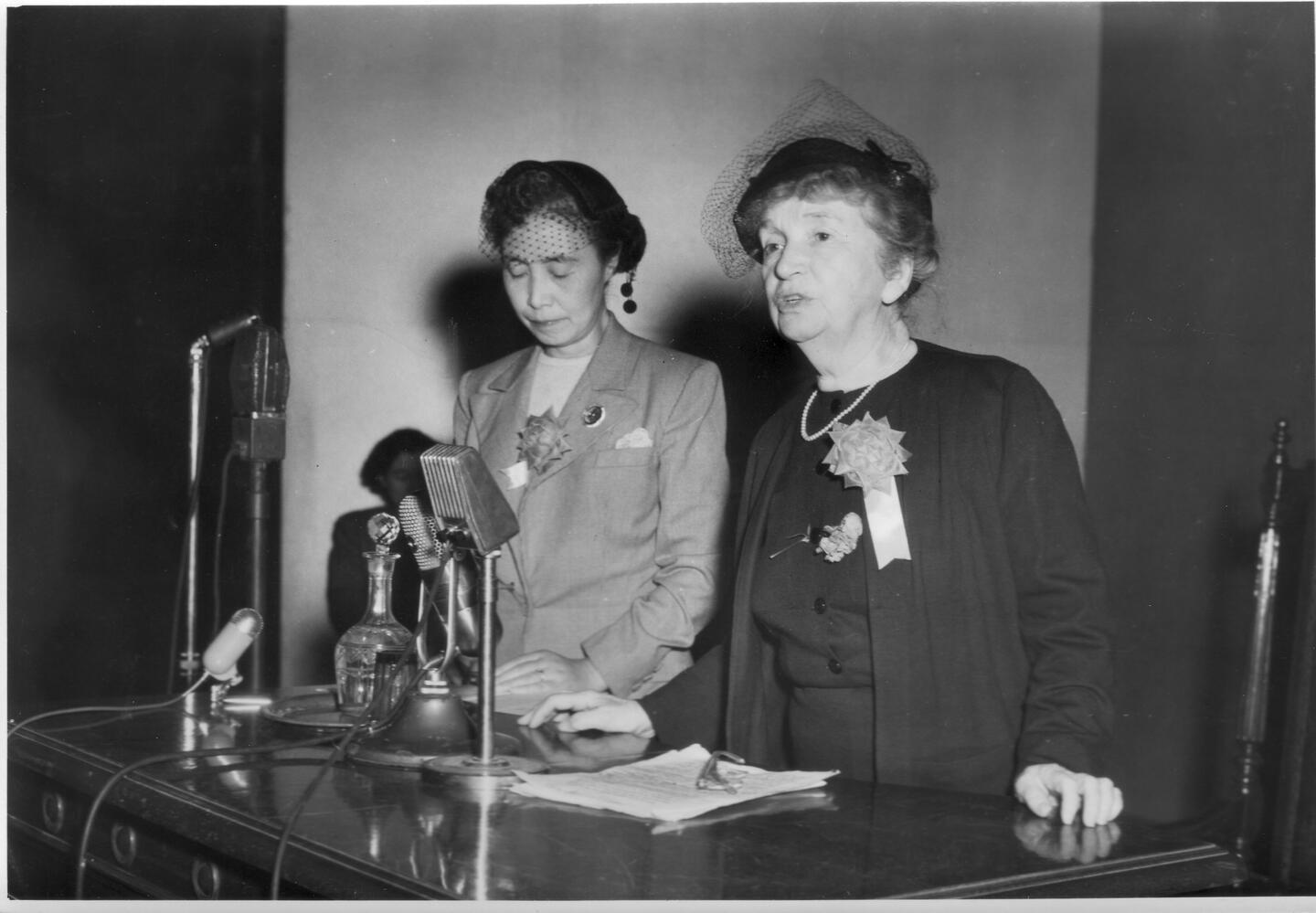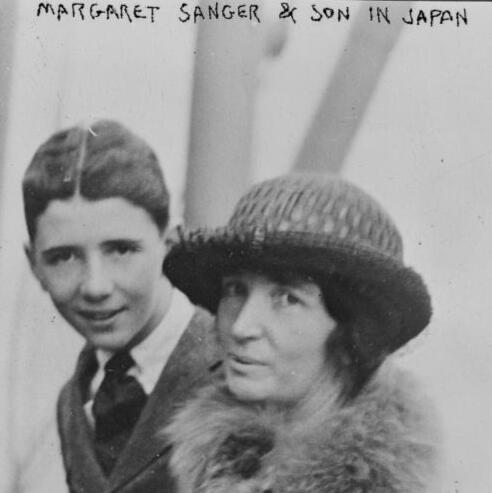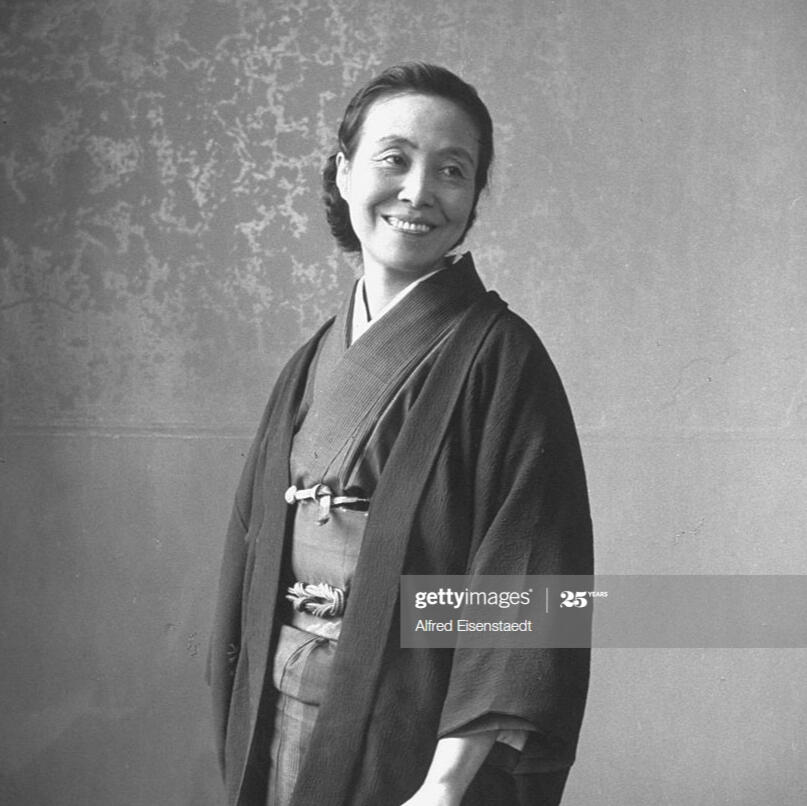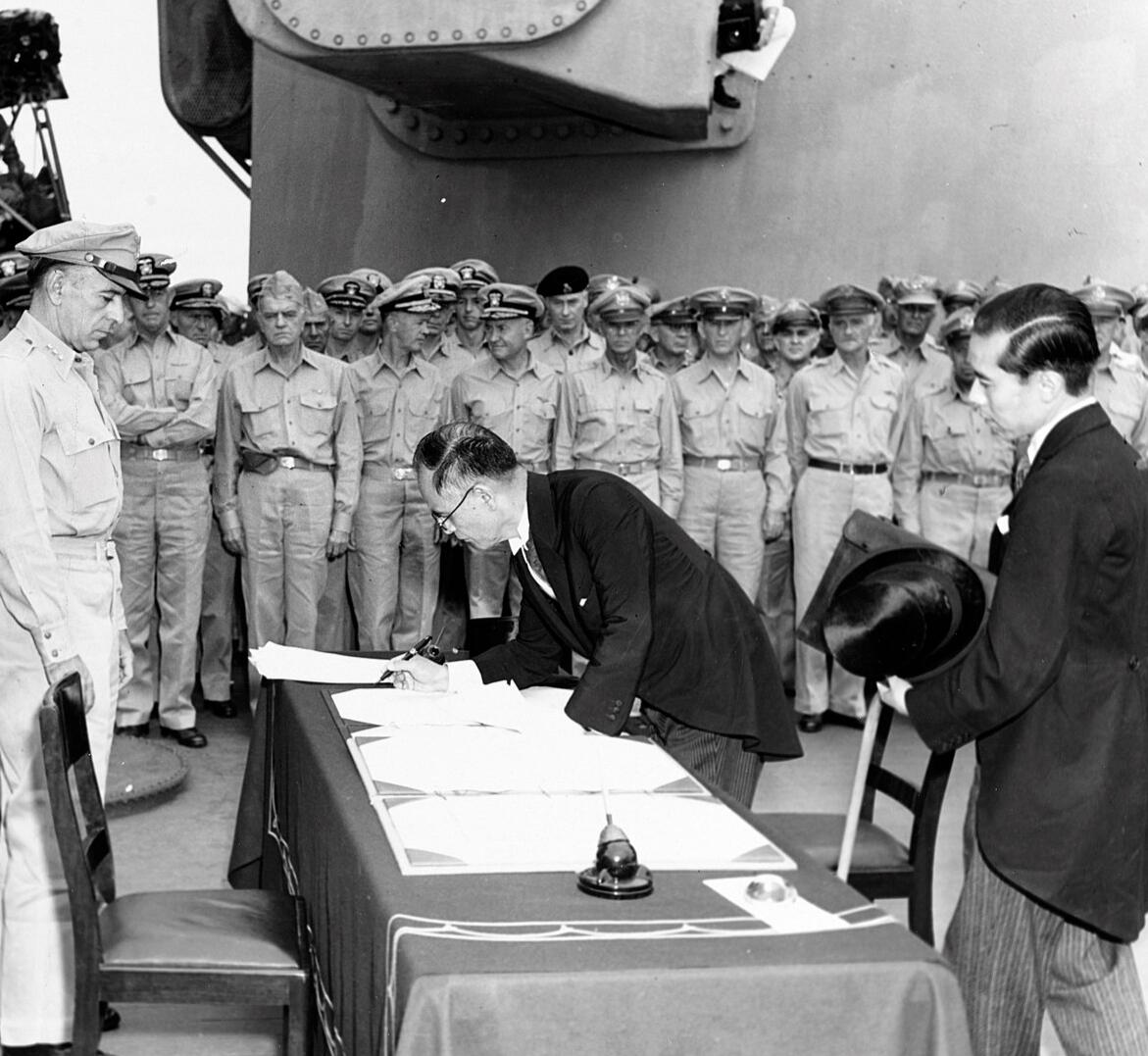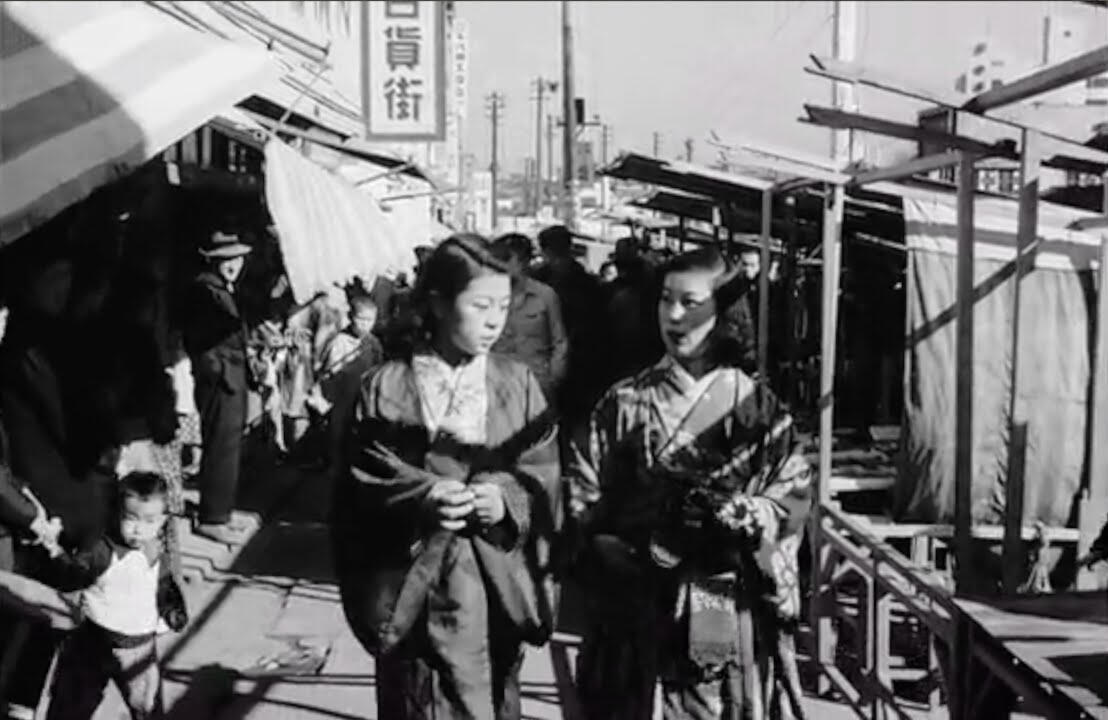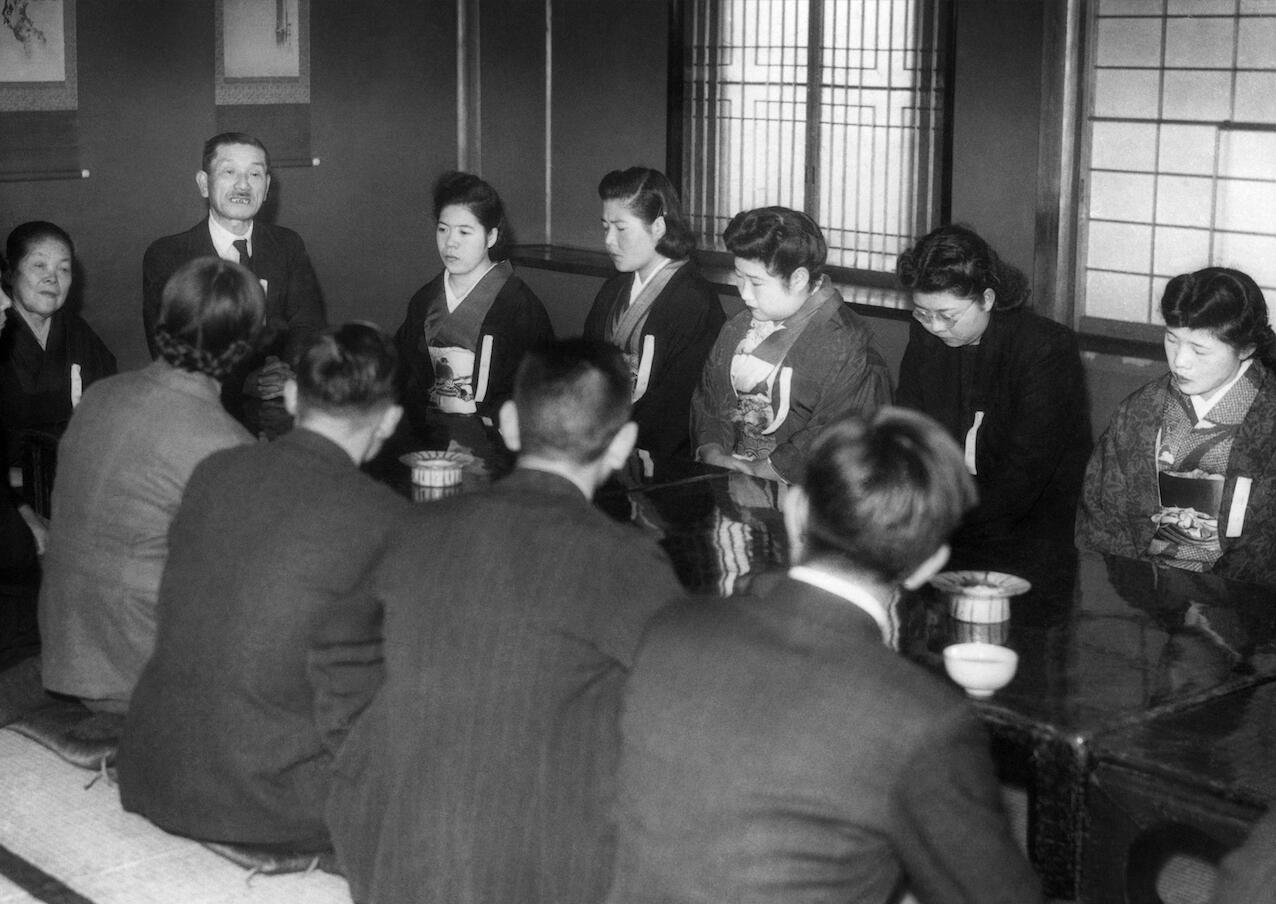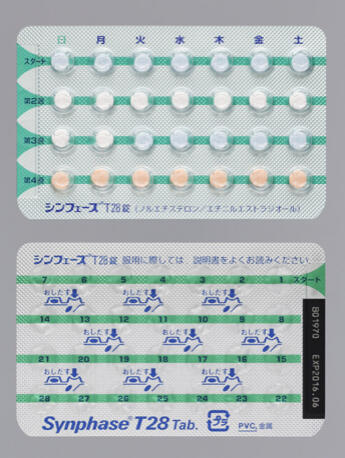TAKING CONTROL:
The Conquest for the Legalization
of Birth Control in Japan
A Digital ExhibitIn Partial Fulfillment of the Requirements
for the course HST352: Women in Japanese Historyby Megumi Mallari and Moe Shiojiri
This digital exhibit analyzes the progression and development of the birth control movement in Japan, from the time it was brought into the country prior to World War II to its legalization in 1950 to the present. The project includes a clear timeline of the events leading up to the manufacture and sale of contraceptive drugs. To further understand the thrust of the birth control movement to Japan, the exhibit highlights the work of Kato Shizue—the pioneer campaigner of the movement in the country, and the influences of Margaret Sanger, the government, and the society at the time. Data for this project was collected through published academic journals, archives, reports, and articles.Keywords: birth control, contraceptives, Kato Shizue, Margaret Sanger, women in Japanese history
Kato Shizue and Margaret Sanger at the Fifth International Conference on Planned Parenthood, held October 24-29, 1955 in Tokyo, Japan. Photo from Margaret Sanger Papers Project's Website.
A BRIEF BACKGROUND
An introduction to the birth control movement in Japan, including its history to explain the reasons for Japan's need for birth control.
timeline of the birth control movement
A chronological outline of the key events that marked the birth control movement in Japan.

Great Kanto Earthquake, 1923. Sophia University Campus. Courtesy of Sophia University Archives.
Margaret Sanger and her son in Japan in 1922. Photo from Japan Today.
THE INFLUENCE OF MARGARET SANGER
Margaret Sanger (1879-1966) was the pioneer for birth control and contraceptive pills in the United States. Her advocacies for women’s reproductive rights has influenced many around the world, including Shizue Kato—the pioneer for the birth control movement in Japan—who invited Sanger to Japan on multiple occasions to educate the Japanese public about birth control and its importance for women’s rights.
The Pioneer:
Kato Shizue
Kato Shizue (1897-2001) was a Japanese feminist and was one of the first women elected in the Diet. But, she is best known to be a champion of the birth control movement in Japan. Much of the success of women’s liberation movements in Japan can be credited to Kato.
Japanese Foreign Minister Mamoru Shigemitsu signs the Instrument of Surrender on behalf of the Japanese Government. Photo from Wikipedia.
Impact of Government Policies on Birth Control
Japanese birth control policies often reflected government principles, paying little regard to women and their bodies. Until reproductive health rights were established, women were strictly dominated by the state to regulate population numbers. In other words, the government would alternate their stance towards birth control, depending on whether they desired to increase or decrease the national population.
Societal Attitudes Toward Birth Control
Similar to the government’s position towards birth control, Japanese societal attitude regarding contraception often differed—depending on the time period—as well. Although birth control is widely accepted in today’s society, this was not always the case.
Postwar Tokyo in the 1940s Photo from Ue o Muite Arukō 上を向いて歩こう (Sukiyaki) Music Video by Kyu Sakomoto.
In this Jan. 28, 1947 photo, women and men meet in a marriage interview organized by Nippon (Japan) Eugenic Marriage Association. Photo from AP Photo.
abortion in japan
As one of the first countries to legalize induced abortion, it continues to be Japan’s key birth control practice. While the low-dosage pill was only legalized in 1999 (the emergency contraceptive pill still remains unapproved), abortion has been legal in Japan since 1948. This section will outline how the initial law that passed in 1948—the Eugenics Protection Law—underwent repeated amendments to ultimately become the Maternal Body Protection Law in 1996.
A contraceptive pill in Japan, today. Photo from Life Abroad.
at present
When examining the evolution of the birth control movement in Japan, it is also crucial to consider how it has played out within the 21st century context. Due to the persistent efforts made by prominent figures of the birth control movement—like Kato and Sanger—the Japanese society has increasingly recognized women’s reproductive health rights, and normalized access to certain contraceptive methods.
conclusion
The birth control movement was successful in implementing and legalizing contraceptive methods, which ultimately granted basic reproductive health rights for women in Japan.
Kato Shizue and Margaret Sanger at the Fifth International Conference on Planned Parenthood, held October 24-29, 1955 in Tokyo, Japan. Photo from Margaret Sanger Papers Project's Website.
Online photo sources can be accessed upon clicking each picture.
WHAT IS BIRTH CONTROL?
This project adapts Planned Parenthood’s definition of birth control, which states that it is the use of certain methods to prevent pregnancy.Contraceptives range from pills to shots and implants, to IUDs and vaginal rings, among many others that emerged in the modern age.Birth control is related to women’s rights, as it is an indication of a woman’s full ownership of her own body and of the process of conception, as opposed to other occurrences in history which suggested otherwise.
text References
Birth Control. Planned Parenthood.Coutts, Holly Kristin. From "Population Control to Reproductive Rights: Constructing Abortion and Contraception in Post-War Japan", Master's Thesis. The University of Manitoba, 2000, 23–28.Eberts, Carolyn. "The Sanger Brand: The Relationship of Margaret Sanger and the Pre-War Japanese Birth Control Movement", Master's Thesis. Bowling Green State University, 2010, 105–107.Goto Atsuo, Reich R Michael & Aitken W Iain. Oral Contraceptives and Women's Health in
Japan. JAMA. 1999;282(22):2173–2177. doi:10.1001/jama.282.22.2173Hays, Jeffrey. (2013). Birth control, abortion and population control in Japan. Facts and Details.Homei, Aya. “The Science of Population and Birth Control in Post-War Japan.” In Science, Technology, and Medicine in the Modern Japanese Empire, ed. Wittner DG, Brown PC, Chapter 14. New York: Routledge, 2016.Ishimoto, Shizuye. "Birth Control in Japan." The Birth Control Review, vol. XVI, no.10, 1932, 297+. Nineteenth Century Collections Online.Iwasawa Miho & Sato Ryuzaburo. “Contraceptive use and induced abortion in Japan: How is it so unique among the developed countries?” In the Japanese Journal of Population. Semantic Scholar, vol. 4, no.1, 2006, 36. Japan International Cooperation Agency. (2006). “Chapter 4: Family Planning” In Japan’s Experience in Public Health and Medical Systems. JICA, 78–85.Norgren, Tiana. “Abortion before Birth Control: The Interest Group Politics Behind Postwar Japanese Reproduction Policy.” Journal of Japanese Studies 24:1 (1998),
59–94. doi:10.2307/132939Times Newspapers Limited. Shizue Kato. (2002).Tipton, Elise K. “Ishimoto Shizue: The Margaret Sanger of Japan” Women's History Review, 6:3 (1997), 337–355, DOI: 10.1080/09612029700200151Tokyo MFL 2020. Why We March in Japan? (2020).Women's rights activist Kato dies at 104. The Japan Times. (23 December 2001).
photo references
Online photo sources can also be accessed upon clicking each picture.
❀ A Brief BackgroundKato Shizue and Margaret Sanger at the Fifth International Conference on Planned Parenthood, held October 24-29, 1955 in Tokyo, Japan. Photo from Margaret Sanger Papers Project's Website.Video background from Constitutional Change in Japan, A Hard Recovery, "Japan's Postwar Constitution"Margaret Sanger and Kato Shizue at the Fifth International Conference on Planned Parenthood, held October 24-29, 1955 in Tokyo, Japan. Photo from Margaret Sanger Papers Project's Website.Post-war Japan. Photos from Constitutional Change in Japan "Japan's Postwar Constitution"––––––––––––––––––––––––––––––––––––––––––––––––––––––––––❀ Timeline1914 — Japanese soldiers enter Shanghai during World War I, watched by Italian Troops. Photo from Keystone, via Getty Images.1920 — Women’s Liberation: Suffrage week in Tokyo. Photo from the Library of Congress.1922 — (Original Caption) Mrs. Margaret Sanger of New York, (R), is shown, photographed on her arrival to Japan. Japan being opposed to birth control, she was forbidden to make any public talks on the subject. In this photo with her are the Baroness and Baron Ishimoto, leaders for control of birth in Tokyo. Mrs. Sanger was their guest. Photo from Bettman via Getty Images.1923 — Great Kanto Earthquake, 1923. Sophia University Campus. Courtesy of Sophia University Archives.1932 — The Sanger Clinic, 46 Amboy Street, Brooklyn. Photo from the Library of Congress.1936 — Japanese Militarism. Photo from Wikia.1939 — Japan during WW2. Photo from The Asia-Pacific Journal: Japan Focus.1941 — Umeyo, Fuyaseyo. Give Birth and Multiply. Photo from Goo.1947 — Post-war Japan. Photos from Constitutional Change in Japan "Japan's Postwar Constitution".1952 — Sanger waving to the Japanese crowd upon arrival in the country in 1955. Photo from Margaret Sanger Papers Project's Website.1955 — (Original Caption) The Principal Speaker at the Fifth International Birth Control Conference held in Tokyo, Margaret Sanger, is shown as she addresses the delegates who attended the five- day meeting. The conference was held in Tokyo, because Japan is one of the most overpopulated countries. Mrs. Sanger, president of the International planned parenthood federation, disclosed that an American scientist has almost perfected a small "oral contraceptive" which can be eaten like candy, and described the discovery as one that " may revolutionize the world." Photo from Bettman via Getty Images.1974 — Dr. Ota Ring. Photo from the Museum of Contraception and Abortion.1999 — Oral Contraceptives. Photo from Murata Ladies Clinic.––––––––––––––––––––––––––––––––––––––––––––––––––––––––––❀ The Influence of Margaret Sanger to the Japanese Birth Control MovementMargaret Sanger and her son in Japan, 1922. Photo from Japan Today.Sanger at Osaka Station. Photo from Margaret Sanger Papers Project's Website.Sanger and Kato watching a Geisha dance. Photo from Margaret Sanger Papers Project's Website.Sanger with Kato Shizue, Dorothy Brush, and Abraham Stone at the Fifth International Conference on Planned Parenthood, held October 24-29, 1955 in Tokyo, Japan. Photo from Margaret Sanger Papers Project's Website.Sanger with Kato, talking to a Japanese mother and her child. Photo from Margaret Sanger Papers Project's Website.Sanger escorted by unidentified Japanese men. Photo from Margaret Sanger Papers Project's Website.Sanger and Kato Shizue at the Fifth International Conference on Planned Parenthood, held October 24-29, 1955 in Tokyo, Japan. Photo from Margaret Sanger Papers Project's Website.Sanger with an unidentified Japanese man. Photo from Margaret Sanger Papers Project's Website.Sanger addressing the crowd at the Fifth International Conference on Planned Parenthood, held October 24-29, 1955 in Tokyo, Japan. Photo from Margaret Sanger Papers Project's Website.Sanger waving to the Japanese crowd upon arrival in the country in 1955. Photo from Margaret Sanger Papers Project's Website.(Original Caption) The Principal Speaker at the Fifth International Birth Control Conference held in Tokyo, Margaret Sanger, is shown as she addresses the delegates who attended the five- day meeting. The conference was held in Tokyo, because Japan is one of the most overpopulated countries. Mrs. Sanger, president of the International planned parenthood federation, disclosed that an American scientist has almost perfected a small "oral contraceptive" which can be eaten like candy, and described the discovery as one that " may revolutionize the world." Photo from Bettman via Getty Images.(Original Caption) Mrs. Margaret Sanger of New York, (R), is shown, photographed on her arrival to Japan. Japan being opposed to birth control, she was forbidden to make any public talks on the subject. In this photo with her are the Baroness and Baron Ishimoto, leaders for control of birth in Tokyo. Mrs. Sanger was their guest. Photo from Bettman via Getty Images.––––––––––––––––––––––––––––––––––––––––––––––––––––––––––❀ Kato Shizue: The Pioneer of the Birth Control Movement in JapanPortrait of Socialist Party candidate Mrs. Kato Shizue. Photo by Alfred Eisenstaedt/The LIFE Picture Collection via Getty Images.Kato Shizue: Japan’s First Great Feminist. Photo from Japan Info.Baroness Ishimoto, Margaret Sanger, and Grant Sanger during the Japan trip, 1922. Photo from Bettman via Getty Images.Portrait of Socialist Party Candidate Mrs. Kato Shizue. Photo from LIFE Magazine Archives.Mrs. Kato Shizue, Japan's leading feminists, birth control expert & disciple of her friend Margaret Sanger, holding a model of female sex organs, as she demonstrates how to insert a pessary to a group of women during birth control class. Photo by Margaret Bourke-White/The LIFE Picture Collection via Getty Images.Reporter interviewing Socialist Party candidate Mrs. Shizue. Photo by Alfred Eisenstaedt/The LIFE Picture Collection via Getty Images.Japan’s first postwar election was held in April 1946, where 39 women, including Kato, gained seats in the Diet. Photo from Wikipedia.Portrait of Socialist Party candidate Mrs. Kato Shizue. Photo by Alfred Eisenstaedt/The LIFE Picture Collection via Getty Images.––––––––––––––––––––––––––––––––––––––––––––––––––––––––––❀ Impact of Government Policies on Birth ControlJapanese Foreign Minister Mamoru Shigemitsu signs the Instrument of Surrender on behalf of the Japanese Government. Photo from Wikipedia.The Militarist Government in Japan. Photo from The Diplomat.Umeyo, Fuyaseyo. Give Birth and Multiply. Photo from Goo.Rise of Militarism in Japan. Photo from Facts and Details.––––––––––––––––––––––––––––––––––––––––––––––––––––––––––❀ Societal Attitudes Toward Birth ControlPostwar Tokyo in the 1940s Photo from Ue o Muite Arukō 上を向いて歩こう (Sukiyaki) Music Video by Kyu Sakomoto.Post-war Japan. Photos from Constitutional Change in Japan "Japan's Postwar Constitution".Imperial Japan Under a Militaristic Government. Photo from TVTropes.Contraceptive Methods Used by Japanese Women. Photo from the Journal of the American Medical Association (JAMA), pp. 2176.Ryosai kenbo: “Good Wife, Wise Mother. Photo from Pinterest.––––––––––––––––––––––––––––––––––––––––––––––––––––––––––❀ Abortion in JapanIn this Jan. 28, 1947 photo, women and men meet in a marriage interview organized by Nippon (Japan) Eugenic Marriage Association. Photo from AP Photo.Tenrei Ota (1900-1985). Photo from the Museum of Contraception and Abortion (MUVS)Masako Fukuda. Photo from Wikidata.The “Official Gazette”, issued on August 13th 1948, mentioning the Bill Forwarded for the Eugenic Protection Law. Photo from the No. 711 of the Official Gazette (August 13, 1948) Number of Induced Abortions, 19492003. From The Japanese Journal of Population Vol.4, No.1, via Maternal Body Protection Statistics.JIZO STATUES – In Japan, it is a common practice for mothers who have had abortions to place small Jizo statues at these shrines, in memory of their children. Several shrines to Jizo, the guardian of aborted children’s souls, have been constructed in Japan since World War II. Photo by Muza-chan.–––––––––––––––––––––––––––––––––––––––––––––––––––––––––– ❀ At PresentInduced Abortion Rate (per 1,000 women), by age group from 19552003. From The Japanese Journal of Population Vol.4, No.1, via Maternal Body Protection Statistics.Female Contraceptives in Japan, Multiphasic Oral Contraceptives. From Life Abroad.––––––––––––––––––––––––––––––––––––––––––––––––––––––––––❀ ConclusionMargaret Sanger and Kato Shizue at the Fifth International Conference on Planned Parenthood, held October 24-29, 1955 in Tokyo, Japan. Photo from Margaret Sanger Papers Project's Website.––––––––––––––––––––––––––––––––––––––––––––––––––––––––––
